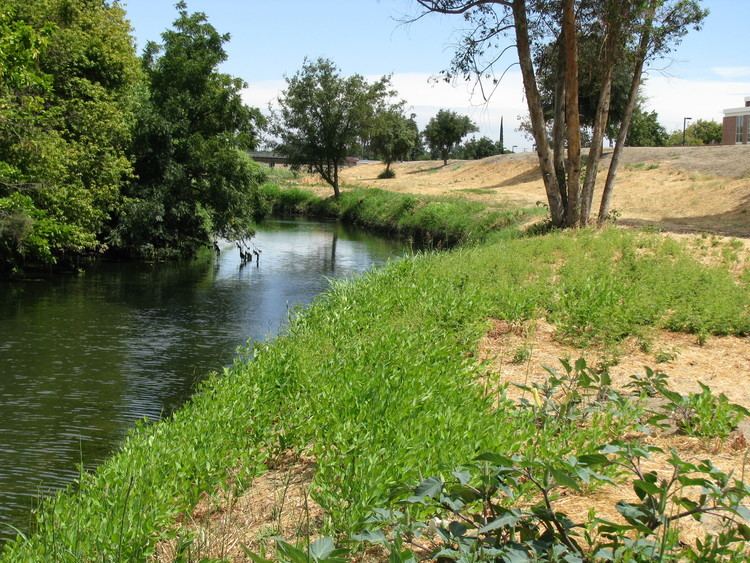- min 0 cu ft/s (0 m/s) Length 84 km Basin area 1,217 km² Country United States of America | - elevation 705 ft (215 m) - average 225 cu ft/s (6 m/s) Discharge 6.371 m³/s Basin area 1,217 km² | |
 | ||
- max 50,000 cu ft/s (1,416 m/s) Source | ||
The Calaveras River is a river in the San Joaquin Valley of California.
Map of Calaveras River, Country Club, CA, USA
It flows roughly southwest for 51.9 miles (83.5 km) from the confluence of its north and south forks in Calaveras County to its confluence with the San Joaquin River just west of the city of Stockton.
The Spanish word calaveras means "skulls." The river was said to have been named by Spanish explorer Gabriel Moraga when he found many skulls of Native Americans along its banks. He believed they had either died of famine or been killed in tribal conflicts over hunting and fishing grounds. In fact, the human remains were of the native Miwuk people killed by Spanish soldiers after they banded together to rise against Spanish missionaries. The Stanislaus River is named for Estanislau, a coastal Miwuk who escaped from Mission San Jose in the late 1830s. He is reported to have raised a small group of men with crude weapons, hiding in the foothills when the Spanish attacked. The Miwuk were quickly decimated by Spanish gunfire. Moraga must not have known this part of history.
In 1836, John Marsh, Jose Noriega, and a party of men, went exploring in Northern California. They made camp along a river bed in the evening, and when they woke up the next morning, discovered that they had camped in the midst of a great quantity of skulls and bones. They also gave the river the appropriate name: Calaveras.
New Hogan Lake is the only lake on the river. It is formed by New Hogan Dam, which was completed in 1963. The dam was built by the United States Army Corps of Engineers, primarily for flood control. The dam also provides drinking water, water for irrigation, hydroelectricity and recreation, including fishing, camping, swimming and water skiing.
